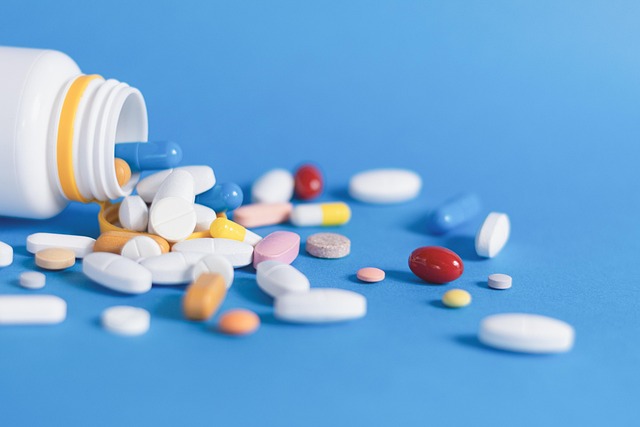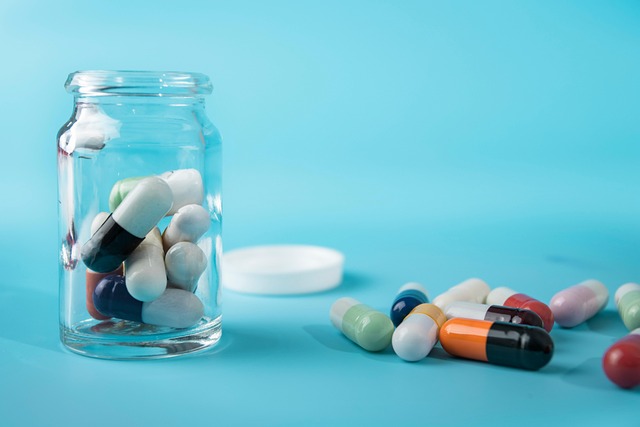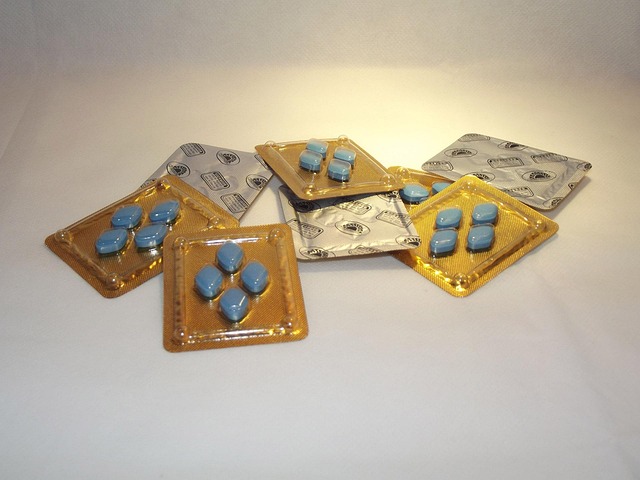GLP-1 drugs are a powerful and cost-effective tool for managing type 2 diabetes, offering improved glycemic control, weight loss benefits, and cardiovascular advantages. They mimic natural gut hormones to regulate blood sugar levels and have shown superior performance in reducing HbA1c levels compared to other antidiabetic agents. By potentially lowering long-term direct and indirect medical expenses, GLP-1 drugs could revolutionize diabetes care, especially with the global increase in diabetes prevalence. The availability of generic versions has improved accessibility and affordability worldwide, while ongoing clinical trials continue to build evidence for their cost-effectiveness over traditional insulin therapies.
“The quest for cost-effective diabetes management has led healthcare professionals to explore the potential of GLP-1 receptor agonists (GLP-1 drugs). These innovative treatments have shown remarkable efficacy in blood sugar control, offering a promising solution to the challenges faced in modern diabetes care. This article delves into the mechanism and benefits of GLP-1 drugs, their role in addressing existing treatment landscape gaps, and their cost-effectiveness compared to other antidiabetic agents. By examining clinical trials, real-world evidence, and access strategies, we explore the potential for GLP-1 drugs to revolutionize diabetes management while reducing healthcare costs.”
Understanding GLP-1 Receptor Agonists: Mechanism and Benefits

GLP-1 receptor agonists, also known as GLP-1 drugs, are a class of medications designed to mimic the effects of the natural hormone glucagon-like peptide-1 (GLP-1). These drugs play a crucial role in managing blood sugar levels in individuals with type 2 diabetes. By activating GLP-1 receptors in the body, they stimulate insulin secretion when blood sugar is high and inhibit glucagon release, helping to lower blood glucose. This dual action not only improves glycemic control but also offers additional benefits.
Beyond their primary function, GLP-1 drugs have been shown to promote weight loss by increasing feelings of fullness and reducing appetite. This effect is particularly significant in the context of obesity management, as it can help individuals achieve a healthier body weight. Moreover, these medications may lower blood pressure and improve cardiovascular health markers, making them valuable tools for comprehensive diabetes care.
The Current Diabetes Treatment Landscape: Challenges and Gaps

The current diabetes treatment landscape is marked by a diverse array of pharmacological agents, each addressing different aspects of the disease. However, despite significant advancements, several challenges and gaps remain unaddressed. One prominent issue is the limited efficacy of many existing treatments in achieving long-term glycemic control, leading to a persistent need for more potent therapies.
Additionally, many current options are associated with adverse effects, including weight gain, hypoglycemia, and gastrointestinal disturbances. Furthermore, the cost-effectiveness of these treatments poses a significant barrier to access, particularly for patients in resource-constrained settings. This creates an urgent need for innovative, affordable solutions like GLP-1 drugs, which show promise in improving glycemic control while potentially offering better tolerability profiles and economic advantages compared to traditional therapies.
How GLP-1 Drugs Offer a Cost-Effective Solution

GLP-1 drugs offer a compellingly cost-effective solution in the realm of diabetes management. These innovative medications mimic the actions of glucagon-like peptide-1, a hormone produced by the gut after eating. By stimulating insulin secretion and suppressing glucagon release, GLP-1 drugs help lower blood sugar levels naturally, reducing the reliance on expensive insulin injections or infusions.
Moreover, their long-acting properties mean fewer daily doses, which can lower overall treatment costs. Additionally, GLP-1 drugs have been shown to reduce cardiovascular risks, potentially preventing costly complications associated with diabetes. This multifaceted approach not only improves patient quality of life but also represents a financially prudent strategy for healthcare providers and insurance companies alike.
Clinical Trials and Real-World Evidence: Efficacy and Safety

Clinical trials have been instrumental in establishing the efficacy and safety of GLP-1 receptor agonists as a treatment option for type 2 diabetes. These studies, involving controlled populations, have demonstrated significant improvements in glycemic control, often leading to reduced HbA1c levels compared to placebo or conventional treatments. Moreover, GLP-1 drugs have shown promising results in weight management, with some trials reporting substantial body weight reduction.
Real-world evidence further reinforces the benefits of these medications. Observational studies and meta-analyses have consistently confirmed their safety profile, identifying rare but serious side effects like pancreatitis or thyroid cancer. However, the majority of patients tolerate GLP-1 drugs well, leading to improved quality of life and reduced diabetes-related complications in real clinical settings.
Direct and Indirect Costs of Type 2 Diabetes Management

Type 2 diabetes management involves a multifaceted approach, encompassing direct medical costs and indirect societal impacts. Direct expenses are primarily associated with medication, including insulin and oral hypoglycemic agents. However, the introduction of GLP-1 receptor agonists (GLP-1 drugs) has shifted this landscape. These innovative therapies offer not only improved glycemic control but also significant cost savings in the long term. By reducing the need for frequent insulin injections or complex monitoring systems, GLP-1 drugs can lower direct medical expenditures.
Indirectly, diabetes management affects productivity and quality of life. The condition can lead to absenteeism from work, early retirement, and various complications that require additional healthcare resources. GLP-1 drugs, with their potential to prevent or delay these adverse outcomes, could contribute to indirect cost savings. This aspect is particularly significant in the context of increasing diabetes prevalence globally, highlighting the economic burden on healthcare systems and society at large.
Comparative Analysis: GLP-1 Drugs vs. Other Antidiabetic Agents

When comparing GLP-1 drugs to other antidiabetic agents, several key advantages emerge. These drugs offer a unique combination of efficacy and cost-effectiveness that sets them apart from traditional insulin therapies or other classes of oral medications. In terms of improving glycemic control, GLP-1 drugs have demonstrated superior results in clinical trials, often leading to significant reductions in HbA1c levels compared to alternatives.
Moreover, the long-term economic benefits of GLP-1 drugs are substantial. While initial treatment costs may be higher than for other antidiabetics, their consistent efficacy and reduced risk of hypoglycemia translate into lower overall healthcare expenditures. This cost-effectiveness is further enhanced by the potential for weight loss, which can lead to improved patient outcomes and decreased comorbidities, ultimately reducing long-term medical expenses.
Access and Pricing Strategies for GLP-1 Drugs

Access and pricing strategies for GLP-1 drugs have evolved since their initial introduction, reflecting the dynamic landscape of pharmaceutical markets. Many factors influence the cost of these medications, including manufacturing processes, research and development investments, and market competition. Several GLP-1 drugs are now available as generics, significantly lowering barriers to access and making them more affordable for patients worldwide. This trend is a testament to the industry’s efforts to balance innovation with accessibility.
Pricing strategies vary across manufacturers, with some offering patient-assistance programs and co-pay cards to mitigate out-of-pocket expenses. Additionally, government policies and healthcare systems play pivotal roles in negotiating prices, ensuring that GLP-1 drugs remain within reach for a broader population. As the market matures, continued competition is expected to drive costs down further, potentially improving long-term patient adherence and outcomes related to diabetes management.
Future Prospects and Potential Cost Savings in Diabetes Care

The future of diabetes care looks promising with GLP-1 receptor agonists at the forefront, offering significant potential for cost savings while improving patient outcomes. As research progresses, new formulations and administration methods are being explored, aiming to enhance convenience and accessibility. These advancements could lead to reduced treatment abandonment rates, a common challenge in long-term diabetes management.
The ability of GLP-1 drugs to lower blood sugar levels, reduce body weight, and improve cardiovascular outcomes makes them an attractive option for healthcare providers and patients alike. With ongoing clinical trials investigating their efficacy and safety in diverse patient populations, there is a growing body of evidence supporting their cost-effectiveness over traditional insulin therapies. This shift could result in substantial savings for healthcare systems worldwide, allowing for better allocation of resources while ensuring high-quality diabetes management.
